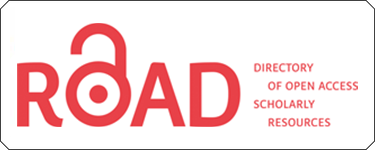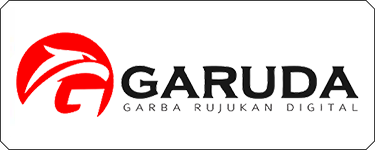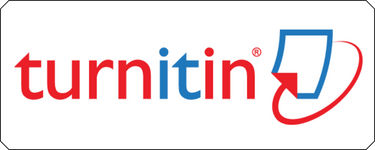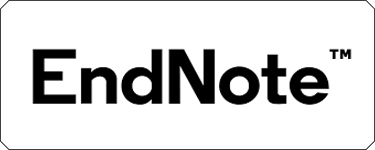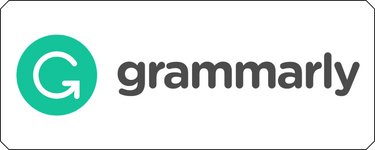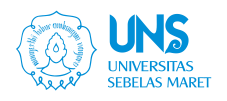FITUR-FITUR BAHASA PEREMPUAN YANG DIGUNAKAN OLEH BTS ARMY DALAM WHATSAPS GROUPCHAT BUTTER ARMY OF INDONESIA
Abstract
Abstract: The use of woman language against the background of K-POP fans, especially the boy group BTS, is very interesting to discuss. This research focuses on analyzing the features of woman language used by BTS fans called ARMY in whatsaap group chat Butter ARMY of Indonesia. This research uses a qualitative descriptive method by applying a sociolinguistic approach that focuses on the use of woman language features in whatsapp group chat Butter ARMY of Indonesia. The data collection technique was carried out using the technique of listening and recording through orthographic transcription. This research uses a method as a pragmatic commensurate data analysis with the determining tool is the speech partner itself based on the speaker's language. The basic technique applied is the sorting of determining elements (PUP). Based on the results of the study, it was found that the use of Women's Language features in the whatsaap group chat Butter ARMY of Indonesia was 70 data where the use of Question tag features was more dominant as many as 19 and the use of Rising Intonation on Declaration was the least used which was only 1 data.
Keywords
Full Text:
PDFReferences
Ascalonicawati, Adinda Prasty. 2020. “Fitur-Fitur Tuturan Emma Watson Dalam Wawancara (The Features of Speech of Emma Watson in Interview[s]).” Jalabahasa 16(1):1–14. doi: 10.36567/jalabahasa.v16i1.401.
Dwi Nugraha, Dana, Anggik Budi Prasetiyo, Jalan Kalimantan No, and Kampus Tegalboto. 2021. “Karakteristik Fitur-Fitur Kebahasaan Tokoh Laki-Laki Dan Perempuan Dalam Komik Detektif Conan Edisi 28.” NEOLOGIA: Jurnal Bahasa Dan Sastra Indonesia 3(1):29–35.
Gamble, Teri Kwal, and Michael W. Gamble. 2014. The Gender Communication Connection.
Hapsari, Dwina Rahmaniar, Didi Sukyadi, and Risa Triarisanti. 2022. “Fitur Bahasa Wanita Menteri Kang Kyung Hwa Pada Kuliah Umum ‘Hanbando Jongsewa Gellobol Wegyo’(한반도 정세와 글로벌 외교).” Madah: Jurnal Bahasa Dan Sastra 13(2):195–206.
Harahap, Machyudin Agung, and Susri Adeni. 2021. “Bahasa Dalam Komunikasi Gender.” Jurnal Profesional FIS UNIVED 8(2):7–13.
Janet Holmes. 2013. An Introduction of Sosiolinguistic. Vol. 15.
Lakoff, Robin Tolmach. 2004. Language and Woman’s Place.
Mahardini, D. A., and M. A. Subandi. 2021. “Bentuk Dan Fungsi Fitur Bahasa Wanita Oleh 宁静 Níng Jìng Dalam Program Wawancara《 星月对话》 Xīngyuè Duìhuà Episode 10.” Ejournal.Unesa.Ac.Id.
Nuringtyas, Sekarayu, and Ais Navila. 2022. “Women’S Language Features on Utterances of Charlie’S Angels Movie.” Jurnal Penelitian Humaniora 23(1):12–20. doi: 10.23917/humaniora.v23i1.19162.
Perempuan, Laki-laki D. A. N., Dalam Komik, Conan Edisi, Dana Dwi Nugraha, and Anggik Budi Prasetiyo. 2021. “KARAKTERISTIK FITUR-FITUR KEBAHASAAN TOKOH Abstract : Male and Female Characters in 28th Edition Detective Conan.” 29–35.
Safitri, R. 2021. “Translating Method Towards Sexism in English Version of Andmesh Song Titled ‘Hanya Rindu.’” Language Horizon 9(1).
Saleh, Huriyah. 2019. BAHASA DAN GENDER Dalam Keragaman Pemahaman. Vol. 53.
Tannen, Deborah. 2007. “You Just Don ’ t Understand.” 1–157.
Utami, Ni Nyoman Astrini. 2022. “Penggunaan Fitur Bahasa Perempuan Pada Novel Tempurung Karya Oka Rusmini.” Diglosia: Jurnal Kajian Bahasa, Sastra, Dan Pengajarannya 5(2):327–40. doi: 10.30872/diglosia.v5i2.282.
Widayanti, Sukasih Ratna, and Kustinah. 2019. “Analisis Pragmatik Pada Fungsi Tindak Tutur Dalam Film Karya Walt Disney.” Prasasti: Journal of Linguistics 4(2):180–85.
Wisnu Bayu Temaja, I. Gede Bagus, and I. Putu Yoga Purandina. 2022. “Perbedaan Penggunaan Bahasa Antara Laki-Laki Dan Perempuan Dalam Berkomunikasi Di Facebook.” Samvada : Jurnal Riset Komunikasi, Media, Dan Public Relation 1(1):48–59. doi: 10.53977/jsv.v1i1.562.
Zulkarnain, Said Iskandar dan Naria Fitriani. 2018. “Perbedaan Gaya Bahasa Laki-Laki Dan Perempuan Pada Penutur Bahasa Indonesia Dan Aceh.” Gender Equality : International Journal of Child and Gender Studies 4(1):159–72.
Refbacks
- There are currently no refbacks.





